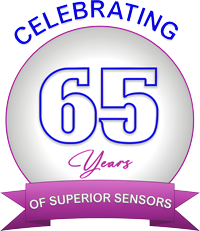The Costs of Force Sensor Quality
Are the costs of force sensor quality important? Absolutely, especially if a company is actively looking to purchase force sensors for an application with strict requirements or will be operating in a harsh environment like in space or underwater.
Understanding the issues that define force sensor quality will help tremendously in evaluating force sensor manufacturers and products. Superior quality is a critical factor in the design and manufacturing of every Strainsert force sensor. Offering a two year warranty, double the industry standard, along with repair and calibration services to support our customers reflects how strongly we believe in it.
The costs of force sensor quality for a domestic customer in the U.S. is defined by four categories: prevention, appraisal, internal failure, and external failure. Reviewing each part in detail will make clear why force sensor manufacturers like Strainsert emphasize the Prevention and Appraisal categories, giving customers a more accurate and reliable product and saving cost in the longer term.
Cost of Good Quality:
Prevention – Prevention is exactly what it sounds like: taking the necessary and effective actions for reducing defects, non-conformance, rework and other issues up front. Prevention costs are incurred by investing in those preventative actions that save time and cost later.
The investments include strategic planning, training, quality inspections, AS9100 audits, established design and engineering practices, proper equipment maintenance, process improvement, detailed supplier evaluation and qualification and other very practical, vital and expected things that force sensor manufacturers should be doing every day.
Appraisal – Appraisal touches on important actions taken to measure and evaluate the quality of force sensor products and processes. These actions incur costs that include inspection, testing, calibration, auditing, data collection, data analysis, and quality reporting.
Cost of Bad Quality:
Internal Failure – Internal failure covers a wide range of issues that occur prior to the force sensor products being shipped to the customer and need to be fixed before they can be shipped to the customer. These costs include when defects or errors lead to scrap, rework, downtime, re-inspection, over time for employees, additional materials being used and corrective action.
External Failure – External failure defines defects or errors that are only detected after the force sensor products are shipped to the customer. These are especially harmful compared to internal failure because they cannot be fixed before the customer gets them and has to deal with either returning or getting rid of them as unusable. These costs include reputation loss, warranty, reduced customer trust, repair, replacement, recall, liability, and customer dissatisfaction.
These internal and external failures are reduced by investing in both prevention and appraisal. Strainsert invests in prevention and appraisal. Because of these efforts, we have been able to streamline the difficult tasks associated with custom force sensor design and manufacturing, provide our customers with high quality, accurate and durable force sensor products that meet their application specifications and operate well in the field.
The other key attribute Strainsert provides to their customers is the ability to design and manufacture custom force sensors like load pins, load bolts, tension links and flat load cells that fit their existing infrastructure by replacing an existing pin, bolt or stud with an internally strain gaged force sensor.
A company looking to minimize their costs for quality and identify the right force sensor design and manufacturing partner will benefit greatly from working with Strainsert. Please contact us to get started.

